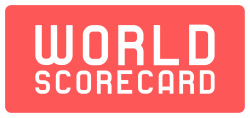Brazil’s Inflation Rate
#134 of 179 in the Inflation Rate progress rankings
Measured as the annual percentage rise in general prices, the Inflation Rate reveals how rapidly costs for goods and services are increasing. It signals changes in purchasing power and economic balance, assisting policy makers in assessing stability (lower is better).
Latest (2024)
4.4 %
Year-over-year
-0.2 %
Change since start (1981→2024)
-97.4 %
Key insights
- From 1981 to 2024, Inflation Rate changed by -97.4 %.
- Most recent year-over-year change (2023→2024): -0.2 %.
- Lowest level: 3.2 % in 1998.
- Highest level: 2,947.7 % in 1990.
Inflation Rate Chart (1981–2024)
*Average based on available data from 193 UN member countries
Inflation Rate Table (1981–2024)
| Year | Inflation Rate |
|---|---|
| 1981 | 101.7 % |
| 1982 | 100.5 % |
| 1983 | 135.0 % |
| 1984 | 192.1 % |
| 1985 | 226.0 % |
| 1986 | 147.1 % |
| 1987 | 228.3 % |
| 1988 | 629.1 % |
| 1989 | 1,430.7 % |
| 1990 | 2,947.7 % |
| 1991 | 432.8 % |
| 1992 | 952.0 % |
| 1993 | 1,927.4 % |
| 1994 | 2,075.9 % |
| 1995 | 66.0 % |
| 1996 | 15.8 % |
| 1997 | 6.9 % |
| 1998 | 3.2 % |
| 1999 | 4.9 % |
| 2000 | 7.0 % |
| 2001 | 6.8 % |
| 2002 | 8.5 % |
| 2003 | 14.7 % |
| 2004 | 6.6 % |
| 2005 | 6.9 % |
| 2006 | 4.2 % |
| 2007 | 3.6 % |
| 2008 | 5.7 % |
| 2009 | 4.9 % |
| 2010 | 5.0 % |
| 2011 | 6.6 % |
| 2012 | 5.4 % |
| 2013 | 6.2 % |
| 2014 | 6.3 % |
| 2015 | 9.0 % |
| 2016 | 8.7 % |
| 2017 | 3.5 % |
| 2018 | 3.7 % |
| 2019 | 3.7 % |
| 2020 | 3.2 % |
| 2021 | 8.3 % |
| 2022 | 9.3 % |
| 2023 | 4.6 % |
| 2024 | 4.4 % |
Source: World Bank
